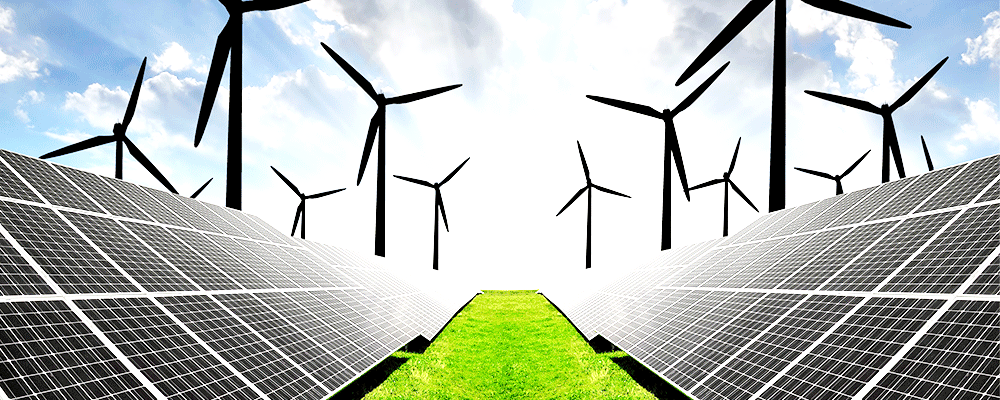The Institute for Energy Economics and Financial Analysis (IEEFA) released a report last last week, that identifies China’s expansion into renewable energy projects “Going Global” in conjunction with its “One Belt, One Road” programme. The report examines 30 corporate case studies to explore China’s rising global leadership in the low-carbon emission energy industry. The extent of China’s domestic investment in renewables has surpassed all expectations, with the resulting technology development and economies of scale driving down costs to the point where renewables are exceeding grid parity in an increasing number of market segments.
China is the world leader in domestic investment in renewable energy and associated low-emissions-energy sectors. China invested $103bn in this sector in 2015, up 17% year on year, according to Bloomberg New Energy Finance (BNEF)—two and half times the amount undertaken by the U.S.
Similarly, China will install 40% of all worldwide wind energy and 36% of all solar in this same period. Given that the rapidly improving cost competitiveness of renewable energy is driving expansions of renewable energy capacity in an ever-increasing number of countries around the globe, in Europe, India, the Middle East, Latin America, and North America and given that multi-billion dollar renewable energy tenders are being announced weekly, China is performing no small feat by being responsible for over a third of all investment across the three sectors.
Five of the world’s six largest solar-module manufacturing firms in 2016 are in China. At a time when First Solar of the U.S. has announced it will retrench 25% of its global staff, China National Building Materials (CNBM) is building a $1.6bn 1.5GW thin-film solar module facility. CNBM clearly seeks to challenge First Solar’s absolute dominance of this sub sector. Dow Chemical U.S.’s decision in 2016 to sack 2,500 staff and exit the building-integrated photovoltaic (BIPV) solar manufacturing sector will only assist CNBM’s move.
On the wind front, Goldwind, a Chinese company, overtook Vestas in 2015 to become the largest wind-turbine manufacturer globally. Counting its more domestic-focussed companies, which included United Power, Ming Yang, Envision and CSIC, China owns five of the ten top wind-turbine manufacturing firms. China’s Tianqi Lithium is the largest lithium ion manufacturer globally following its acquisition of Talison Lithium in 2012 and Galaxy’s Jiangsu processing facility in 2015. It comes as no surprise to see Tianqi spending $2.5bn in September 2016 to acquire a 25% minority stake in SQM of Chile, the world’s fourth-largest lithium firm. Lithium prices skyrocketed in 2016 as the world recognised electric vehicles (EV) are set to challenge the historic dominance of the global automotive sector by internal-combustion engines. While Tesla attracts Western media attention, its global lithium ion battery and EV leadership is being challenged by two Chinese firms, BYD and CATL. Chinese leadership and control of the global lithium sector is developing along the lines of the rare-element mining and processing sector, which is now 90% and 72% controlled respectively by Chinese enterprises after the financial collapse of Molycorp US in 2015.
The Paris COP21 Climate Agreement was reached largely on the back of the 2014 ChinaU.S. pledge to cooperate on emissions reductions. That pledge laid the foundation for other countries to pledge their own reductions. While shared responsibility was the basis on which COP21 was built and while it stands as a catalyst to renewable-energy investment, the global boom in renewables has market driven momentum. In the event that the incoming U.S. presidential administration reduces U.S. COP21 commitments, IEEFA views it as extremely unlikely that China will turn away from renewable energy investment. Liu Zhenmin, China’s vice-foreign minister, stated at the recent Marrakech COP22 conference that any change in U.S. policy “won’t affect China’s commitment to support climate negotiations and also the implementation of the Paris Agreement.” In fact, Chinese companies are poised to accelerate international renewable energy build-out and fill any void left by reduced implementation from other countries.
An increased presence of Chinese renewable energy companies in international markets is very much in line with Chinese government policy. The government’s 13th Five-Year Plan, published in 2015, clearly indicates that China sees a huge opportunity in extending its domestic renewable energy build-up overseas with ambitions of making the country the global leader in the new energy technology. Chinese companies have been encouraged to internationalise since the “going abroad” policy of the 10th Five-Year Plan (2001-2005), and the early wave of Chinese investment abroad is now being augmented by Chinese investment in the renewable energy sector.
The “One Belt, One Road” initiative launched by President Xi Jinping in 2014 is further driving the increasingly outward-looking nature of Chinese infrastructure companies. Under this initiative, smaller and developing Asian countries like Myanmar, Laos and Cambodia, are seeing accelerated economic growth driven by Chinese investment, which in turn is developing new markets for Chinese exports. Any reduced U.S. commitment to Asia could allow China’s share of development to expand more. Latin America is currently one of the most attractive regions in the world for renewable energy development, and Chinese companies are already highly active in renewables investment in Mexico, Brazil, Argentina, Chile, Peru and elsewhere in the region. President Xi Jinping has recently returned from a visit to Latin America during which he granted Chile and Ecuador China’s highest diplomatic status. The visit was Xi’s third since becoming president in 2013. On this most recent trip he agreed to more than 40 deals spanning energy, finance, agriculture, technology and other sectors. Chinese investment in Latin America has reached $237bn a year compared to U.S. investment of $268bn. However, with an agreement in place to increase Chinese investment in the region to $500bn, and the distinct possibility of the U.S. leaving the Trans Pacific Partnership (which includes Mexico, Peru and Chile), China seems better positioned to capitalise on the renewables boom taking place across South and Central America. Such a boom requires considerable investment to sustain, and China is again uniquely positioned to provide such investment.
Chinese institutional investment assets under management rose by 500% from 2005 to 2015, from US$1.1trillion to $7.1 trillion. This makes China the second-or third-largest institutional investment market globally, and the figure is expected to increase to $10 trillion by 2020. The fact that only 2% of the current total is invested offshore is a key statistic: If China increases this ratio to 10% by 2020, it would amount to $1 trillion of new foreign investment. China’s recognition of renewable technology as the energy provider of the future is now dovetailing with its policy of internationalising its major companies and expanding its economic influence around Asia and elsewhere. Chinese companies have become more prevalent in the renewables sector globally, and international announcements of reverse auction PPA contract awards feature Chinese firms at some stage of the development as a matter of course. Going forward, this China presence can be expected to increase as the second-largest economy in the world sees strategic advantage in becoming the global leader in renewable energy.












